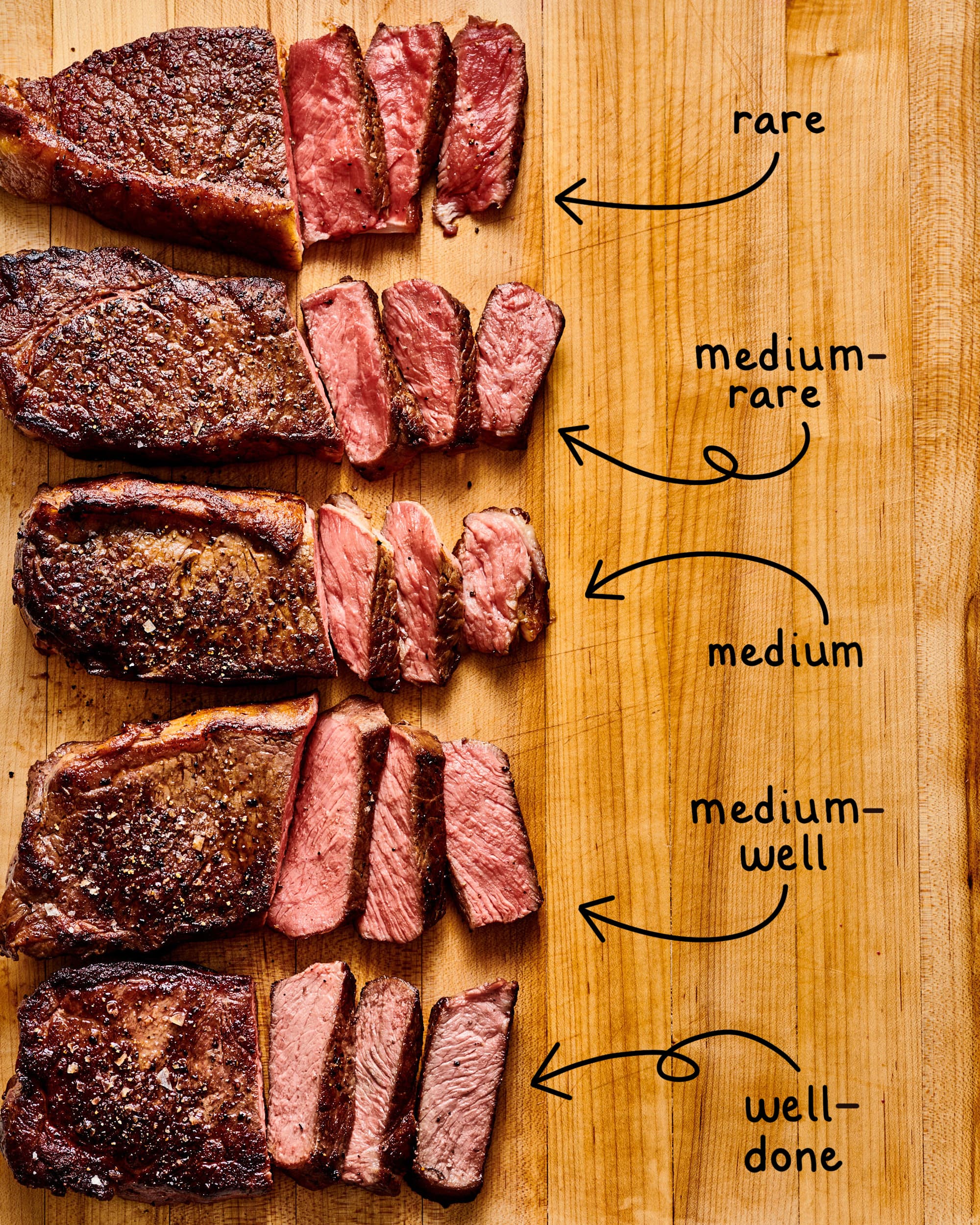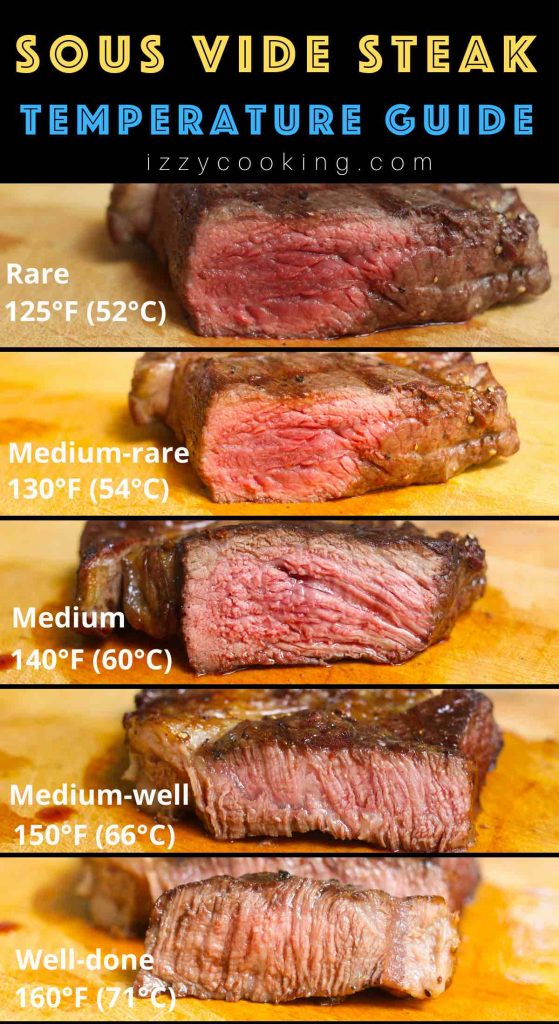Is there a culinary zenith, a precise point where the primal satisfaction of perfectly cooked steak meets the art of flavor and texture? The answer, for many discerning palates, lies firmly in the realm of medium-rare.
More than just a preference, the consistent execution of a medium-rare steak represents a mastery of heat, timing, and understanding of the very nature of the meat. This guide delves into the nuances of achieving that ideal state: a steak yielding to the slightest pressure, a center blushing with pink, and a flavor that sings of both simplicity and sophistication.
Before delving into the specifics of temperature and technique, let's establish the critical details that define perfection. Here, is a summary of facts in the table format:
- Erome Explore Your Guide To Adult Content More
- Jane Omeara Driscoll Behind Bernie Sanders A Look At His Spouse
| Characteristic | Details |
|---|---|
| Internal Temperature Range | 130°F to 135°F (54°C to 57°C) |
| Appearance | Pink or red center with a juicy texture |
| Texture | Tender, with a slight give |
| Flavor | Enhanced by retained natural juices, enhanced by crust |
| Preferred Cuts | Ribeye, New York Strip, Filet Mignon |
Achieving this result requires not just following instructions, but a true understanding of the principles. Understanding the temperature and the process of cooking of the steak.
Temperature Guide for Medium-Rare Steak
The sweet spot for medium-rare is remarkably precise: 130°F to 135°F (54°C to 57°C). Hitting this target ensures the steak's interior is a succulent pink, a color that hints at the juices ready to burst forth with the first bite. It is a matter of both skill and the right tools. A good meat thermometer is an essential tool.
Here's a quick reference for steak temperatures, expanding on the medium-rare ideal:
- Epaper Kannada Prabha Your Daily Dose Of News Anywhere
- Splashland Your Ultimate Water Park Adventure Awaits
- Blue: 115°F (46°C) - Very Rare
- Rare: 120°F to 125°F (49°C to 52°C)
- Medium-Rare: 130°F to 135°F (54°C to 57°C)
- Medium: 140°F to 145°F (60°C to 63°C)
- Medium-Well: 150°F to 155°F (66°C to 68°C)
- Well-Done: 160°F and above (71°C and above)
Why Medium-Rare is Preferred
Medium-rare doesn't just satisfy a preference; it is a culmination of the steak's potential. The balance it offers between internal moisture and external browning is unparalleled. It is the point at which the steak's inherent flavors are fully expressed.
Cooking Methods for Achieving Medium-Rare
While the desired outcome is the same, the path to medium-rare can vary. Your choice of cooking method should depend on your personal preference and the steak.
Pan-Seared Steak
Pan-searing is the art of high-heat precision. The goal is to create a flavorful crust while keeping the interior juicy. A cast-iron pan is your ally here, able to retain and distribute heat for an even sear.
Grilling
Grilling gives the steak a unique smoky depth and those coveted grill marks. The key is to master the high heat needed for a quick sear, followed by a more gentle heat, if required, to reach the target internal temperature.
Oven Roasting
For thicker cuts, oven roasting provides a gentler cooking environment after an initial sear. This method allows for a more even cooking throughout the steak's mass.
Tools You Need for Perfect Steak
Certain tools are crucial for the consistent achievement of a medium-rare result. These tools are your guides.
- Meat Thermometer: An absolute essential for accurate temperature readings.
- Cast Iron Pan: Ideal for searing due to its superior heat retention.
- Tongs: For flipping the steak without piercing it, which would lead to loss of juices.
- Timer: Keeps track of the cooking time, an invaluable tool for any method.
The Science Behind Steak Temperatures
Cooking steak is a complex interplay of heat and protein transformation. It's crucial to appreciate that the changes occur as the temperature climbs. Understanding these allows for better control over the final result.
How Temperature Affects Texture
The magic of medium-rare lies in its balance: enough heat to develop flavor and crust, but not so much as to toughen the meat. At lower temperatures, the meat's natural tenderness is preserved. However, as the temperature rises, the protein structure changes, affecting texture.
Common Mistakes to Avoid
Even the most skilled cooks can stumble. Avoiding these mistakes is crucial for consistently perfect results:
- Cooking Steak Without Resting It: Resting allows the internal juices to redistribute.
- Overcooking: Overcooking ruins texture and flavor.
- Not Using a Meat Thermometer: Guesswork is unreliable; a thermometer ensures accuracy.
How to Check the Temperature of Your Steak
The meat thermometer is your most trustworthy ally. Insert it into the thickest part of the steak, avoiding bones and fat. Wait for the reading to stabilize, ensuring accuracy.
Tips for Using a Meat Thermometer
Ensure the thermometer is calibrated and clean. Insert it at an angle to prevent the escape of juices. A mid-cook check allows for necessary adjustments.
Resting Steak
Resting is not a luxury, it is essential. It allows the juices, driven to the center during cooking, to redistribute evenly throughout the meat. This crucial step ensures a more flavorful and tender result.
Allow the steak to rest, loosely covered, for 5 to 10 minutes. This allows the temperature to stabilise and the meat fibers to relax.
Variations in Steak Cuts and Temperatures
Different cuts of steak, each with its unique characteristics, may require subtle adjustments in cooking time and temperature. Always consider the cut of the steak.
- Fillet Mignon: Cooks quickly, requiring careful attention to time.
- Ribeye: More fat means it can handle slightly higher temperatures.
- Strip Steak: Benefits from precise cooking and timing.
Understanding Cut-Specific Temperatures
Every cut has its own personality. Learn how to prepare each to get the best possible outcome. Refer to a steak temperature chart for tailored guidance.
Health Benefits of Medium-Rare Steak
Beyond flavor, cooking steak to medium-rare preserves its nutritional integrity. This method retains more vitamins and minerals, and is often easier to digest.
Nutritional Value of Steak
Steak is a nutritional powerhouse, rich in protein, iron, and essential amino acids. It is a satisfying and nutritious meal, when prepared with care.
Tips for Perfectly Cooked Steak
Here are some additional pieces of guidance to aid you in cooking the perfect steak, every time.
- Season Generously: Seasoning enhances the natural taste of the meat.
- Let Steak Come to Room Temperature: Promotes even cooking.
- Use High-Quality Meat: Start with the best ingredients for the best results.
The pursuit of a perfectly cooked medium-rare steak is a rewarding culinary journey. It's an art honed with practice. The techniques and the guidelines provided can consistently deliver steaks that impress your family and friends.
Mastering the art of the medium-rare steak requires attention to detail, an understanding of the science behind cooking, and a commitment to learning from each attempt. It's a skill that elevates any cook's repertoire, offering a delicious experience.
Data and references used in this article are sourced from reputable culinary institutions and publications, ensuring the accuracy and reliability of the information provided.
- Dana Harel Hailey Gowns Your Guide To Red Carpet Glamour
- Exploring Sexy Open Video Films What You Need To Know

